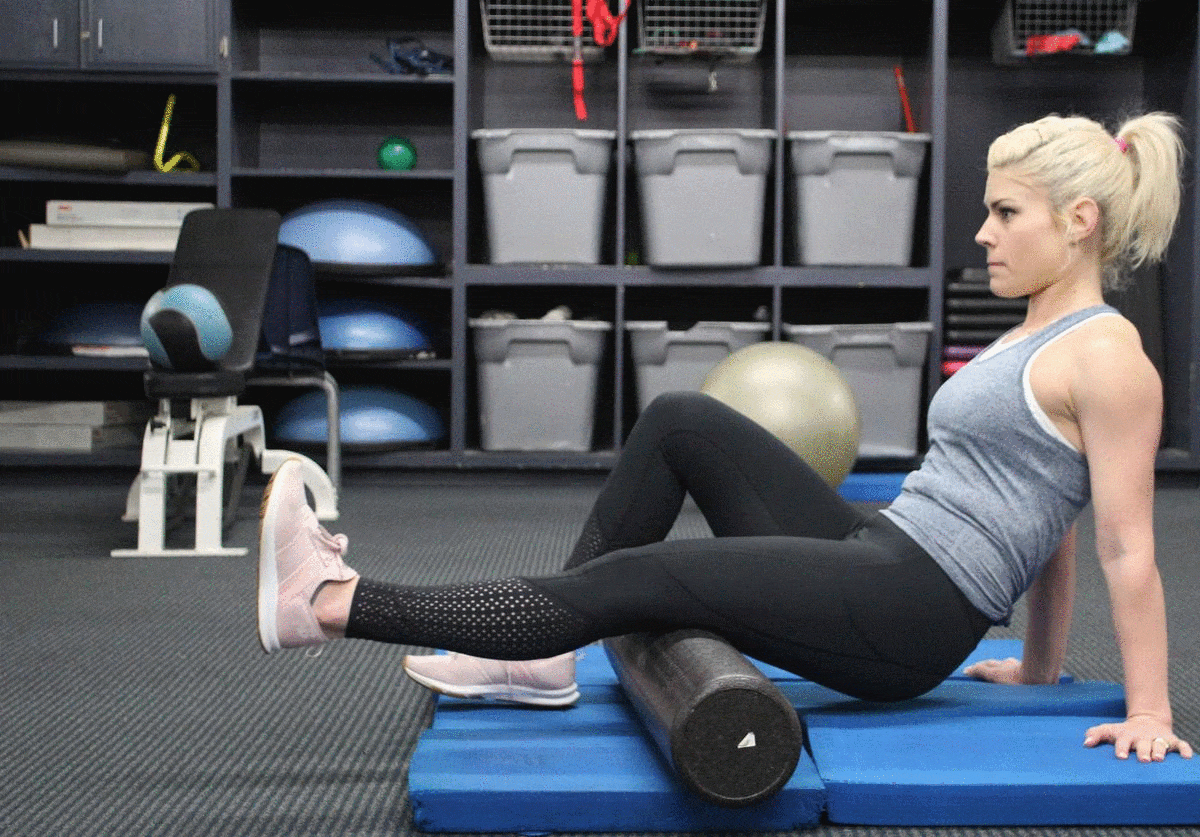
Amy Ward, a Beachbody master trainer, does the Foam Roller Hamstring at Little Rock Racquet Club. (Arkansas Democrat-Gazette/CELIA STOREY)
If you've ever wondered why your fellow gymgoers are sitting on a cylindrical object while rolling back and forth slowly, you're not alone.
The first time I saw someone writhing around on the floor with a roller, I almost stopped to ask if they needed help.
Foam rolling is an activity that spread as fast as any fitness trend I can remember, and it is a regular occurrence in most fitness centers today.
Foam rollers come in all shapes, sizes and densities. Some have a texture — little nubs — on the surface, while others are smooth. The variety of foam rollers is mind boggling, so it's not always easy to evaluate which roller is appropriate. In my opinion, it's best to start with a soft, smooth foam roller that takes up a lot of real estate. These are the easiest to get used to and the least likely to cause any type of discomfort.
And while we're on that topic, it's important to understand that foam rolling is supposed to create some discomfort.
It doesn't always feel great, but it should not result in excruciating pain. If that's the case, you're doing it wrong.
The technique of foam rolling involves applying light to medium pressure to target the muscle groups that are subject to developing tightness or tension. Foam rolling should not be performed over a joint space, but along the length of a muscle and in a slow, controlled fashion.
It takes practice to understand where specific muscles tend to develop tightness and even more practice to apply foam rolling to the affected area.
The good news is, the risk associated with foam rolling incorrectly is minimal. Your technique can improve over time as you become more familiar with your own anatomy, physiology and pain tolerance.
This week's exercise is a perfect way to introduce foam rolling for those who've not tried it before. The hamstrings are usually among the stiffer muscles, and the foam rolling technique required is relatively easy to implement, even for beginners.
1. Select a foam roller and sit on the floor.
2. Center the roller under your left hamstrings.
3. Maintain your balance with both hands on the floor. Your left leg should be supported by the foam roller only. Your foot should not touch the floor.
4. Bend the knee of your other leg for comfort.
5. Use your hands to roll forward and backward — allowing the foam roller to massage sore areas of the hamstrings.
6. Roll all the way until the roller almost reaches the knee, then back the other direction until you reach the gluteal area.
7. Roll back and forth for 30 seconds, then switch legs.
The best foam-rolling experience should last two or three minutes and involve two or three muscle groups. It's not something you have to dedicate entire chunks of workouts toward, but it is a valuable method of managing delayed onset muscle soreness while promoting better flexibility and blood flow.
It's more fun than stretching and less expensive than a massage, and there are some of the benefits of both with foam rolling. Try it today!
Matt Parrott has a doctorate in education (sport studies) and a master's in kinesiology and is certified by the American College of Sports Medicine.
vballtop@aol.com
Style on 02/11/2019